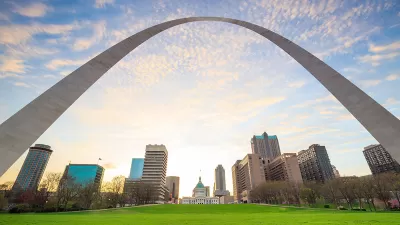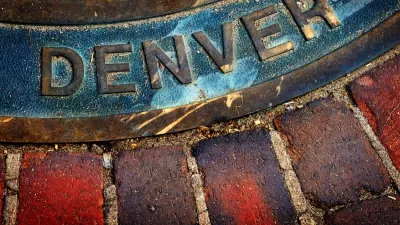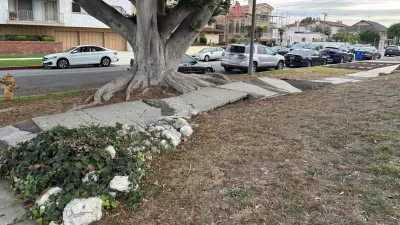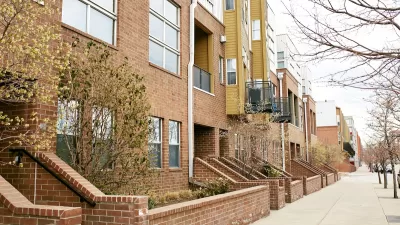A $6 million program takes aim at a backlog of thousands of requests for sidewalk maintenance, but critics say requiring property owners to foot half of the bill excludes less affluent neighborhoods.

The infusion of federal pandemic relief dollars is funding a $6 million program to fix broken sidewalks in St. Louis, as part of efforts to clear a years-long backlog of requests. According to a St. Louis Post-Dispatch article by Austin Huguelet, “There are at least 1,500 uneven, cracked or crumbling sidewalks awaiting service from the city’s repair program, and many people have heard help is coming before: At least 180 of the requests date back to 2017 or earlier.”
The city also found that old requests were, for a time, not rolling over year to year, meaning that unfulfilled requests disappeared without any action. In the summer of 2022, in response to a series of deadly crashes, the mayor’s office launched a plan “to spend tens of millions of dollars to redesign dangerous intersections, install traffic-slowing devices on major thoroughfares, and shore up the city’s beleaguered sidewalk program.”
Critics argue that the program’s funding structure, which requires property owners to pay 50 percent of the cost of sidewalk repairs, means that lower-income neighborhoods will be left with crumbling infrastructure.
FULL STORY: St. Louis residents have waited years for new sidewalks. Can the city catch up?

Study: Maui’s Plan to Convert Vacation Rentals to Long-Term Housing Could Cause Nearly $1 Billion Economic Loss
The plan would reduce visitor accommodation by 25,% resulting in 1,900 jobs lost.

North Texas Transit Leaders Tout Benefits of TOD for Growing Region
At a summit focused on transit-oriented development, policymakers discussed how North Texas’ expanded light rail system can serve as a tool for economic growth.

Why Should We Subsidize Public Transportation?
Many public transit agencies face financial stress due to rising costs, declining fare revenue, and declining subsidies. Transit advocates must provide a strong business case for increasing public transit funding.

How to Make US Trains Faster
Changes to boarding platforms and a switch to electric trains could improve U.S. passenger rail service without the added cost of high-speed rail.

Columbia’s Revitalized ‘Loop’ Is a Hub for Local Entrepreneurs
A focus on small businesses is helping a commercial corridor in Columbia, Missouri thrive.

Invasive Insect Threatens Minnesota’s Ash Forests
The Emerald Ash Borer is a rapidly spreading invasive pest threatening Minnesota’s ash trees, and homeowners are encouraged to plant diverse replacement species, avoid moving ash firewood, and monitor for signs of infestation.
Urban Design for Planners 1: Software Tools
This six-course series explores essential urban design concepts using open source software and equips planners with the tools they need to participate fully in the urban design process.
Planning for Universal Design
Learn the tools for implementing Universal Design in planning regulations.
City of Santa Clarita
Ascent Environmental
Institute for Housing and Urban Development Studies (IHS)
City of Grandview
Harvard GSD Executive Education
Toledo-Lucas County Plan Commissions
Salt Lake City
NYU Wagner Graduate School of Public Service





























